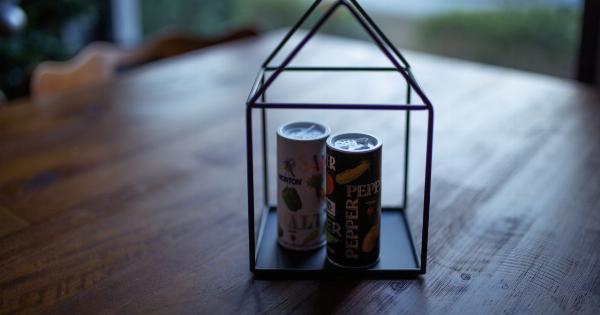Sound is an integral part of our daily lives.
Whether it is the cheerful chirping of birds in the morning, the rumbling noise of traffic during rush hour, or the soothing melody of our favorite songs, our ears are constantly bombarded with sounds of various frequencies and intensities. However, excessive exposure to loud noises can have detrimental effects on our hearing health. In this article, we will delve into the science behind how noise affects our hearing.
The Anatomy of the Ear
Before we explore how noise impacts our hearing, let’s first understand the intricate anatomy of our ears. The ear can be divided into three main parts: the outer ear, the middle ear, and the inner ear.
The Role of the Outer Ear
The outer ear consists of the pinna, which is the visible part of the ear, and the ear canal. Its primary function is to collect sound waves and direct them towards the middle ear.
The shape and structure of the pinna help in localizing the source of the sound.
The Middle Ear and Sound Amplification
Situated between the outer and inner ear, the middle ear contains three tiny bones called ossicles: the malleus (hammer), incus (anvil), and stapes (stirrup). These bones amplify the incoming sound waves and transmit them to the inner ear.
The middle ear is also connected to the back of the throat by the Eustachian tube, which helps equalize the pressure on both sides of the eardrum.
The Inner Ear and Sensory Cells
The inner ear is a complex structure that houses two main sensory organs: the cochlea and the vestibular system.
The cochlea is responsible for converting sound vibrations into electrical signals, which are then transmitted to the brain via the auditory nerve. The vestibular system, on the other hand, helps maintain our sense of balance and spatial orientation.
Understanding Sound and Decibels
Sound is the result of vibrations traveling through a medium, such as air or water. These vibrations create waves that our ears interpret as sound. The unit used to measure the intensity of sound is called decibels (dB).
The decibel scale is logarithmic, which means that a small increase in decibel level corresponds to a significant increase in the intensity of sound.
The Dangers of Noise Exposure
Excessive exposure to loud noises can have detrimental effects on our hearing. Prolonged exposure to sounds above 85 dB can cause noise-induced hearing loss (NIHL).
This type of hearing loss is irreversible and can occur gradually over time or suddenly due to a single extremely loud noise. Apart from NIHL, loud noises can also lead to other adverse effects, such as tinnitus (ringing in the ears) and hyperacusis (increased sensitivity to normal sounds).
How Noise Damages the Ear
When we expose ourselves to loud noises, the delicate hair cells in the cochlea can become damaged. These hair cells are essential for converting sound vibrations into electrical signals that can be interpreted by the brain.
Once these hair cells are damaged, they do not regenerate, leading to permanent hearing loss.
The Mechanisms of Noise-Induced Hearing Loss
Noise-induced hearing loss can occur through two different mechanisms: temporary threshold shift (TTS) and permanent threshold shift (PTS). TTS refers to a temporary reduction in hearing sensitivity due to exposure to loud sounds.
This can occur after attending a concert or spending a few hours in a noisy environment. However, with time, the hearing usually returns to normal.
Preventing Noise-Induced Hearing Loss
Fortunately, there are several preventive measures that can help protect our ears from noise-induced hearing loss.
Use of Ear Protection
One of the most effective methods of preventing noise-induced hearing loss is by using ear protection, such as earmuffs or earplugs.
These devices help reduce the intensity of sounds that reach the inner ear, thereby minimizing the risk of damage to the delicate hair cells. It is crucial to use ear protection in noisy environments, such as construction sites, factories, or during concerts.
Limiting Exposure to Loud Noises
Avoiding prolonged exposure to loud noises is another key preventive measure. If you know you will be exposed to high levels of noise, try to limit the duration of exposure.
Taking regular breaks and finding quieter areas can help give your ears some rest and reduce the risk of hearing damage.
Turning Down the Volume
When listening to music or watching videos through headphones or earphones, it is essential to keep the volume at a safe level. Experts usually recommend using the “60% rule,” which suggests keeping the volume at 60% of the maximum level.
Additionally, limiting the use of headphones for extended periods can further help protect your hearing.
Awareness and Education
Raising awareness about the potential dangers of noise exposure is crucial for maintaining healthy hearing.
Education campaigns and initiatives can play a vital role in informing people about the risks associated with loud noises and promoting preventive measures. By knowing the potential consequences of noise exposure, individuals can take active steps in protecting their hearing health.
Conclusion
Our hearing is a valuable sense that allows us to connect with the world around us. Understanding how noise affects our hearing is essential for taking necessary precautions and preserving our hearing health.
By protecting our ears from excessive noise and being mindful of our listening habits, we can ensure a lifetime of vibrant hearing.


























